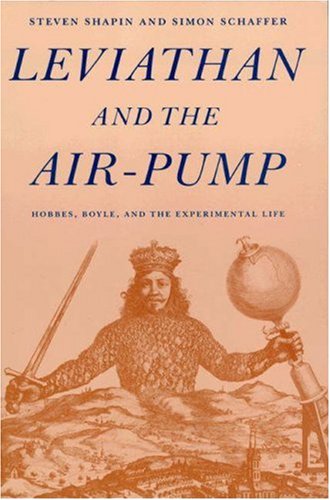Michel Henry: Barbarism (1987/2012)
Filed under book | Tags: · art, capitalism, critique, critique of science, critique of technology, culture, education, philosophy, philosophy of science, science, technology

Barbarism represents a critique, from the perspective of Michel Henry’s unique philosophy of life, of the increasing potential of science and technology to destroy the roots of culture and the value of the individual human being. For Henry, barbarism is the result of a devaluation of human life and culture that can be traced back to the spread of quantification, the scientific method and technology over all aspects of modern life. The book develops a compelling critique of capitalism, technology and education and provides a powerful insight into the political implications of Henry’s work. It also opens up a new dialogue with other influential cultural critics, such as Marx, Husserl, and Heidegger.
First published in French in 1987, Barbarism aroused great interest as well as virulent criticism. Today the book reveals what for Henry is a cruel reality: the tragic feeling of powerlessness experienced by the cultured person. Above all he argues for the importance of returning to philosophy in order to analyse the root causes of barbarism in our world.
Originally published in French as La Barbarie by Editions Grasset & Fasquelle, 1987
Translated by Scott Davidson
Publisher Continuum, London/New York, 2012
Volume 95 of Continuum Impacts
ISBN 1441132651, 9781441132659
168 pages
wikipedia
publisher
google books
PDF
PDF (Alt link, added on 2014-1-21)
Steven Shapin, Simon Schaffer: Leviathan and the Air-Pump: Hobbes, Boyle, and the Experimental Life (1985)
Filed under book | Tags: · air, epistemology, experiment, history of science, knowledge, metaphysics, natural philosophy, philosophy, physics, pneumatics, science

“In the aftermath of the English Civil War, as people were groping for new forms of political order, Robert Boyle built an air-pump to do experiments. Does the story of Roundheads and Restoration have something to do with the origins of experimental science? Schaffer and Shapin believed it does.
Focusing on the debates between Boyle and his archcritic Thomas Hobbes over the air-pump, the authors proposed that ‘solutions to the problem of knowledge are solutions to the problem of social order.’ Both Boyle and Hobbes were looking for ways of establishing knowledge that did not decay into ad hominem attacks and political division. Boyle proposed the experiment as cure. He argued that facts should be manufactured by machines like the air-pump so that gentlemen could witness the experiments and produce knowledge that everyone agreed on. Hobbes, by contrast, looked for natural law and viewed experiments as the artificial, unreliable products of an exclusive guild.
The new approaches taken in Leviathan and the Air-Pump have been enormously influential on historical studies of science. Shapin and Schaffer found a moment of scientific revolution and showed how key scientific givens–facts, interpretations, experiment, truth–were fundamental to a new political order. Shapin and Schaffer were also innovative in their ethnographic approach. Attempting to understand the work habits, rituals, and social structures of a remote, unfamiliar group, they argued that politics were tied up in what scientists did, rather than what they said.”
Including a Translation of Thomas Hobbes’ Dialogus Physicus de Natura Aeris by Simon Schaffer
Publisher Princeton University Press, 1985
ISBN 0691083932, 9780691083933
xiv+440 pages
Reviews: Richard C. Jennings (British Journal for Philosophy of Science), Anna Marie Roos (H-Ideas), Richard Tuck (London Review of Books), J.L. Heilbron (Medical History), Katherine Pandora (UCLA Historical Journal), Aloysius Martinich (Journal of the History of Philosophy), Bruno Latour (Studies in the History and Philosophy of Science), P.B. Wood (History of Science), David Oldroyd (Social Epistemology, reply by William Lynch, reply by Oldroyd), Robert Kargon (Albion), I. Bernard Cohen (American Historical Review), Lawrence Busch (Science & Technology Studies), Mordechai Feingold (English Historical Review), Margaret C. Jacob (Isis), Owen Hannaway (Technology and Culture), Ian Hacking (British Journal for the History of Sciences), James G. Traynham (Journal of Interdisciplinary History), Richard S. Westfall (Philosophy of Science).
PDF
See also Introduction to 2011 edition.
Pierre Klossowski: Nietzsche and the Vicious Circle (1969–) [FR, ES, EN]
Filed under book | Tags: · affect, art, being, chaos, consciousness, culture, god, identity, intensity, language, meaning, perspective, philosophy, physiognomy, science

“Long recognized as a masterpiece of Nietzsche scholarship, Nietzsche and the Vicious Circle is made available here for the first time in English. Taking a structuralist approach to the relation between Nietzsche’s thought and his life, Pierre Klossowski emphasizes the centrality of the notion of Eternal Return (a cyclical notion of time and history) for understanding Nietzsche’s propensities for self-denial, self-refutation, and self-consumption.
Nietzsche’s ideas did not stem from personal pathology, according to Klossowski. Rather, Nietzsche made a pathological use of his best ideas, anchoring them in his own fluctuating bodily and mental conditions. Thus Nietzsche’s belief that questions of truth and morality are at base questions of power and fitness resonates dynamically and intellectually with his alternating lucidity and delirium.”
Publisher Mercure de France, Paris, 1969
Revised edition, 1978
367 pages
English edition
Translated by Daniel W. Smith
Publisher by University of Chicago Press, 1997
ISBN 0226443876, 9780226443874
282 pages
Publisher (EN)
Nietzsche et le cercle vicieux (French, 1969/1978, 5 MB, added on 2015-3-7)
Nietzsche y el circulo vicioso (Spanish, trans. Roxana Páez, 1995)
Nietzsche and the Vicious Circle (English, trans. Daniel W. Smith, 1997, 4 MB, updated on 2019-11-22)
See also Geoff Waite’s Nietzsche’s Corps/e (1996).
Comment (0)
